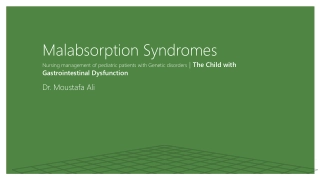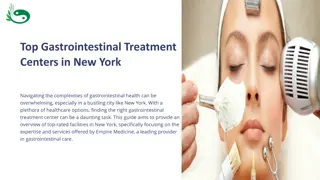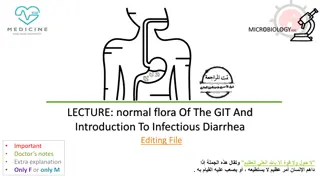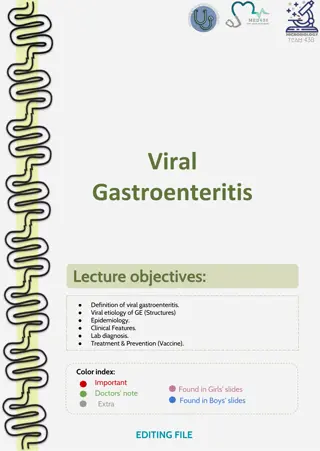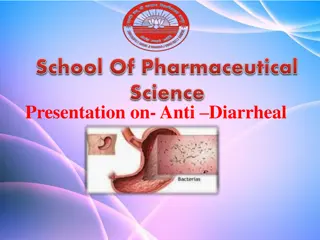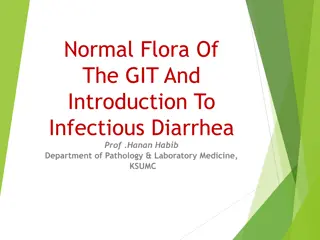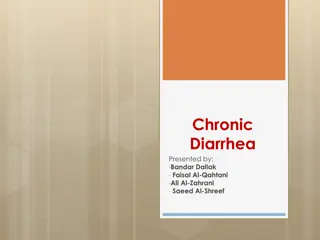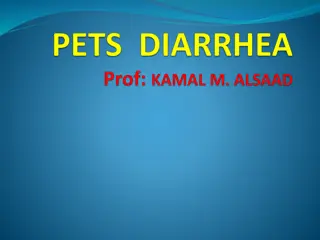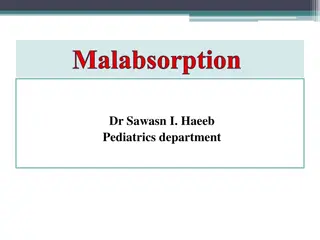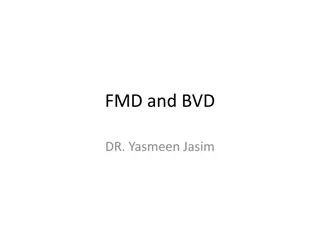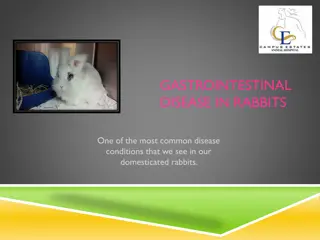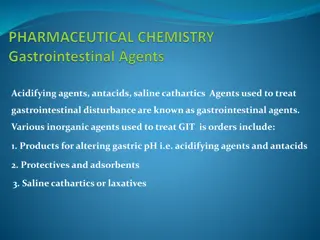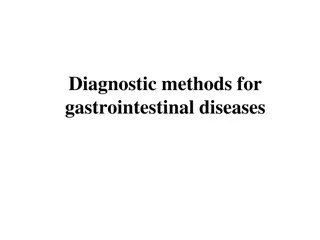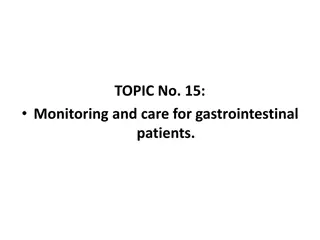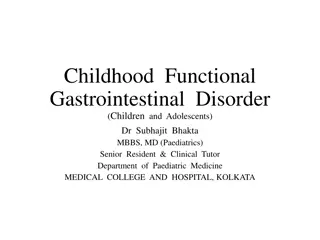Diarrhea and Malabsorption in Gastrointestinal Disorders
The causes, symptoms, classifications, complications, pathophysiology, clinical presentations, and diagnostic findings of diarrhea and malabsorption in various gastrointestinal conditions. Learn about the conditions that lead to these issues and how they can be managed.
Download Presentation

Please find below an Image/Link to download the presentation.
The content on the website is provided AS IS for your information and personal use only. It may not be sold, licensed, or shared on other websites without obtaining consent from the author.If you encounter any issues during the download, it is possible that the publisher has removed the file from their server.
You are allowed to download the files provided on this website for personal or commercial use, subject to the condition that they are used lawfully. All files are the property of their respective owners.
The content on the website is provided AS IS for your information and personal use only. It may not be sold, licensed, or shared on other websites without obtaining consent from the author.
E N D
Presentation Transcript
A B 1. Fasting improve the condition 2. inflammatory bowel diseases 3. High stool output 4. Presence of WBC in stool 5. Irritable bowel syndrome 6. bacterial toxin 7. Malabsorption 8. High fecal osmotic gap a) Secretory b) Osmotic c) Exudative (inflammatory ) d) Motility-related
A B 1. Irritable bowel syndrome 2. Giardia lamblia 3. Viral gastroenteritis 4. Inflammatory bowel disease 5. Food poisoning 6. Antibiotic-Associated Diarrheas 7. Malabsorption a) Acute diarrhea b) Chronic diarrhea
CLASSIFICATION diarrhea 1.Acute 2.Persistent 3.Chronic
What are complications of diarrhea? What are complications of malabsorption?
Endoscopy what is the finding? normal
A 10-month-old, previously healthy male infant develops a severe, watery diarrhea 2 days after visiting the pediatrician for a routine checkup. The most likely diagnosis is a. Rotavirus infection b. Enterotoxigenic E. coli infection c. Entamoeba histolytica infection d. Lactase deficiency e. Ulcerative colitis
Scenario A 44-year-old white male presented with a seven-month history of diarrhea. The frequency of his bowel movements had increased to 5-7 per day, and his stools were yellow and floated at the top of the water in the toilet. He had occasional abdominal cramping, but no tenesmus, melena, or bleeding. His appetite was good, but he had experienced gradual weight loss. His bowel movement frequency would decrease upon fasting and would increase with food intake. Stool tests revealed a stool output of 4128 g/d (nl 100-200 g/d) with fat excretion of 17 g/d (nl <5 g/d). Microscopic examination for ova and parasites and cultures for bacterial pathogens and acid-fast bacilli were negative. Blood testing showed mild anemia , hypoproteinemia (4.9 mg/dL), and hypoalbuminemia (3.4 mg/dL).
Exposure to what dietary antigen is thought to be the cause of these changes? Exposure to gluten (specifically, the gliadin constituent of this protein) What food components contain this antigen? Wheat, barley, flour, and possibly oats contain gluten. Would these histologic changes resolve with dietary modification? yes
A 6-year-old boy has been brought to outpatients by his mother because he has abdominal pain after some meals. This has been getting increasingly frequent and it sounds, from his description, somewhat colicky in nature. You discover that he has always had very smelly, loose, pale bulky stools, which his parents have put down to the fact that he likes milk. On examination, he is pale, underweight, and of short stature.
1. What are the important differential diagnoses on presentation? Celiac disease is the most likely diagnosis. Parasitic infection (e.g. giardiasis) and pancreatic insufficiency (e.g. due to chronic pancreatitis or cystic fibrosis) may give rise to a similar presentation, but these are not supported by the results of the investigations.
2. Blood tests reveal a mild macrocytic anemia. There is a low level of vitamin B12, and folate is at the lower end of normal. Autoantibody screens reveal a positive reaction to antigliadin antibodies. Do these tests help to narrow down the diagnosis? These results are very suggestive of celiac disease due to the low levels of vitamin B12 and the hypersensitivity reaction to -gliadin, a component of gluten. The finding of villous atrophy would support the diagnosis, and this is achieved by endoscopic biopsy of the first part of the duodenum.
3. A duodenal biopsy shows Normal
The final diagnosis is celiac disease, provided the patient s symptoms respond to a gluten- free diet and the histological changes relapse on re-challenge. Such criteria are necessary before confining a patient to a lifelong gluten- free diet.
4. What treatment options are available? Treatment is by adhering to a strict gluten-free diet.
Lactose Intolerance Pathophysiology lactase Lactose glucose + galactose At the brush border of enterocytes Lactose Intolerance Low or absent activity of the enzyme lactase
Lactose Intolerance causes Inherited lactase deficiency Congenital lactase deficiency Childhood-onset and adult-onset lactase deficiency extremely rare common Genetically programmed progressive loss of the activity of the small intestinal enzyme lactase. Gastroenteritis: Infectious diarrhea, particularly viral gastroenteritis in younger children, may damage the intestinal mucosa enough to reduce the quantity of the lactase enzyme. Acquired lactase deficiency Transient Secondary lactase deficiency due to intestinal mucosal injury by an infectious, allergic, or inflammatory process
How to diagnose lactose intorelence ? Empirical treatment with a lactose-free diet, which results in resolution of symptoms; Hydrogen breath test How to treat lactose intorelence ? lactose-free diet


